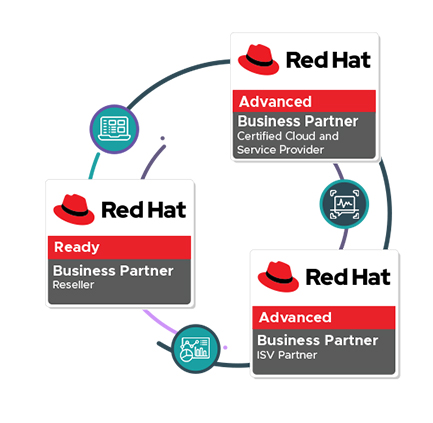OpenStack is one of the most powerful open-source platforms for building and managing private and hybrid clouds. It offers flexibility, scalability, and cost control that appeal to businesses of all sizes. But with that power comes complexity.
Many IT teams, especially smaller ones, are drawn to OpenStack for its promise of freedom from vendor lock-in and enterprise-grade control. However, they quickly realize the learning curve can be steep, the configurations overwhelming, and the maintenance unpredictable.
So, is OpenStack really too complex to handle without expert help? And when is openstack consulting and support truly worth the investment?
Let’s take a closer look at why OpenStack can feel overwhelming, what’s at stake, and how professional guidance changes the game.
Each module is built to be flexible, which is great—until it’s your job to install, integrate, and manage all of them.
Here’s what often makes OpenStack challenging:
This is where many teams run into roadblocks. The platform’s flexibility becomes a double-edged sword, and DIY setups, though appealing, often become hard to scale or secure.
Without deep expertise in every layer of OpenStack, it’s easy to fall into traps:
These issues don’t just delay projects—they can hurt customer experience and erode internal trust in your infrastructure.
Here’s what a good consulting partner offers:
With openstack consulting and support, the platform shifts from an intimidating puzzle to a reliable cloud backbone.
Consulting doesn’t replace your team—it extends it with specialized knowledge you need right now.
But ask yourself:
If the answer to any of these is “not really,” you’re not alone. Many organizations try, get stuck, and lose time and momentum.
Ideally, choose a partner who understands your domain—telco, banking, or enterprise—for relevant recommendations.
If your organization is considering OpenStack, or already facing challenges with it, professional help isn’t a sign of weakness. It’s a fast track to stability and confidence.
Explore how openstack consulting and support from seasoned experts can unlock the full value of your infrastructure. Visit our website to learn how we support telcos, financial institutions, and enterprises in building cloud platforms that are reliable, scalable, and future-ready.
Many IT teams, especially smaller ones, are drawn to OpenStack for its promise of freedom from vendor lock-in and enterprise-grade control. However, they quickly realize the learning curve can be steep, the configurations overwhelming, and the maintenance unpredictable.
So, is OpenStack really too complex to handle without expert help? And when is openstack consulting and support truly worth the investment?
Let’s take a closer look at why OpenStack can feel overwhelming, what’s at stake, and how professional guidance changes the game.
OpenStack: A Modular Marvel or a Maintenance Maze?
At its core, OpenStack is a framework made up of several interlinked services: Nova for compute, Neutron for networking, Cinder for block storage, Keystone for identity, and many others.Each module is built to be flexible, which is great—until it’s your job to install, integrate, and manage all of them.
Here’s what often makes OpenStack challenging:
- Complex setup: Deploying OpenStack from scratch requires deep knowledge of Linux, networking, and virtualization.
- Frequent updates: New releases arrive every six months, introducing changes that require reconfiguration or re-testing.
- Limited documentation in real-world scenarios: While OpenStack has a lot of documentation, applying it to your specific use case isn’t always straightforward.
- Scalability concerns: Poorly planned setups can create performance bottlenecks or limit future growth.
- Security risks: Open ports, outdated configurations, or mismanaged identity services can expose your stack to vulnerabilities.
This is where many teams run into roadblocks. The platform’s flexibility becomes a double-edged sword, and DIY setups, though appealing, often become hard to scale or secure.
Why Smaller Teams Struggle More
Large enterprises typically have the luxury of dedicated teams for infrastructure, security, networking, and DevOps. But smaller teams, often composed of just a few engineers, must handle all these responsibilities.Without deep expertise in every layer of OpenStack, it’s easy to fall into traps:
- Over-customization that creates maintenance nightmares
- Poor monitoring or logging setups, leaving outages hard to detect or resolve
- Minimal automation, leading to slow rollouts and fragile pipelines
- Inconsistent backup strategies, risking data loss in failure scenarios
These issues don’t just delay projects—they can hurt customer experience and erode internal trust in your infrastructure.
How OpenStack Consulting Helps
This is where openstack consulting and support enters the picture. Professional consultants don’t just help with setup—they bring frameworks, tools, and real-world experience that dramatically reduce time, risk, and frustration.Here’s what a good consulting partner offers:
- Architecture Planning: They help design an architecture that fits your workload, performance needs, and budget.
- Fast, Reliable Deployment: Using proven automation frameworks to deploy OpenStack in hours or days—not weeks.
- Security Best Practices: Role-based access control, network isolation, and monitoring are implemented from day one.
- Monitoring and Alerting: Ready-made tools track resource utilization and detect anomalies.
- Training and Handover: Includes documentation and mentorship to empower your internal team.
With openstack consulting and support, the platform shifts from an intimidating puzzle to a reliable cloud backbone.
Real-World ROI: When It Pays Off
For most small and mid-sized teams, the return on professional consulting becomes clear quickly:- Faster time to value: Your private cloud is up and running in days, not months.
- Avoided downtime: Better architecture and monitoring prevent fire drills.
- Lower internal workload: More time spent delivering business value.
- Improved scalability: Growth without needing redesigns later.
- Security confidence: Compliance and data protection without gaps.
Consulting doesn’t replace your team—it extends it with specialized knowledge you need right now.
Can You Go It Alone?
Technically, yes. OpenStack is open source for a reason. You can absolutely install it, configure it, and run it on your own.But ask yourself:
- Do we have the in-house knowledge to troubleshoot OpenStack at scale?
- Can we afford the downtime from trial-and-error deployment?
- Are we prepared to update and upgrade components across major versions ourselves?
- Do we want to build automation and monitoring from scratch?
If the answer to any of these is “not really,” you’re not alone. Many organizations try, get stuck, and lose time and momentum.
What to Look for in a Consulting Partner
Not all services are equal. When choosing an OpenStack consulting partner, look for:- Hands-on deployment experience
- Support for hybrid or multi-cloud models
- Ansible or Terraform-based automation libraries
- Security credentials or compliance knowledge
- Post-deployment training or long-term support options
Ideally, choose a partner who understands your domain—telco, banking, or enterprise—for relevant recommendations.
Conclusion: Don’t Let Complexity Be a Dealbreaker
OpenStack is not broken, bloated, or outdated. It’s just misunderstood. When deployed with care and maintained with the right guardrails, it offers unmatched flexibility and cost control.If your organization is considering OpenStack, or already facing challenges with it, professional help isn’t a sign of weakness. It’s a fast track to stability and confidence.
Explore how openstack consulting and support from seasoned experts can unlock the full value of your infrastructure. Visit our website to learn how we support telcos, financial institutions, and enterprises in building cloud platforms that are reliable, scalable, and future-ready.








